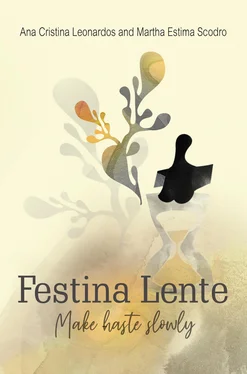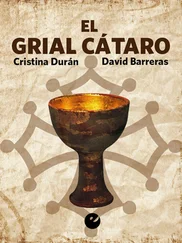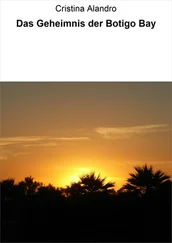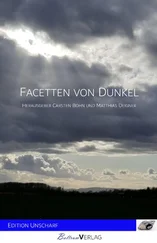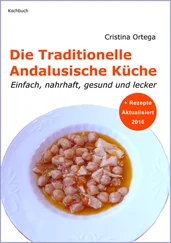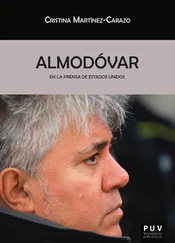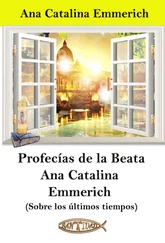Starting with Zeno
Chats…why not?
The chat with time
The chat with the literature
The chat with the women
Some forms of being #at50
#InnerConnection
#LifeBalance
#InMovement
#SpiritualSearch
#Projections
Selfies: #at25, #at50, and #at75
Our inner chats
Returning to Zeno
Landing from the leap
The backstage chat
To know more
This is a book about women in their fifties.
A book about processes, intervals, times, and suspended particles.
A book with a desire to be a bridge on this uncertain journey.
A book that points in many directions.
A book about some forms of being in your fifties.
We invite you to take a chance on this leap and, who knows, during the book, we will meet on other banks amid new landscapes.
At the beginning you do not know that it is the beginning.
At the beginning you do not know that things are commencing.
At the beginning you do not know for sure that dreams are really dreams.
Charleroi Danses
Festina lente , make haste slowly...
“Make haste slowly” is an oxymoron attributed to the Roman Emperor Augustus, represented by a dolphin entwined with an anchor. Agility and dexterity together with security and stability.
This image is useful to us for introducing the theme of the female midlife in the 21 stcentury. At a stage of life when many cycles have been completed and others are calling, the woman at fifty is both the anchor and the dolphin. And she moves within the complementarity of these two images and their respective stages.
In Six Memos for the Next Millennium , writer Italo Calvino tells us a Chinese story to illustrate the subjectivity and relativity of these two stages.
Among the multiple virtues of Chuang Tzu was the ability to draw. The King asked him to draw a crab. Chuang Tzu said that in order to draw it he would need 5 years and a house with 12 servants. After 5 years had passed he had not even started the drawing. “I need another five years”, said Chuang Tzu. The King agreed. When the tenth year ended, Chuang Tzu took the brush and, in an instant, with one single stroke, drew a crab, the most perfect crab that anyone had ever seen.
Psychoanalyst Maria Rita Kehl returns to the fable in Time and the Dog , and alerts us to the characteristics of contemporary temporality, which is often experienced as pure haste, without respecting the necessary time that characterizes the complete movement of understanding — the movement that is not defined by the abstract and chronological measurement of clocks.
Kronos — the ravenous god of time, a mythological titan who governs the cosmos and counts life in minutes and seconds — provides the dimension of “it’s very early” or “it’s very late”, and “right now” or “not yet”.
Kairos — the Greek word that designates the right, critical, or opportune moment — marks internal qualities of time: the difference and the substance of things in tempore . When nothing is too early or too late, it ceased to exist or has not yet occurred, because we are immersed in the idea of time as opportunity.
Festina lente , Kronos and Kairos: an unusual summary of disparate and complementary concepts that are interwoven with our fifties, and let us think with the necessary haste so that we don’t miss the beat of our time and the timeless and indispensable calm for us to discover ourselves in our infinite individuality.
A negotiation between these two ideas of time seems crucial in order for us to seek, if not a utopic completeness, at least a possible comprehension of our fifties.
Let’s make haste slowly.
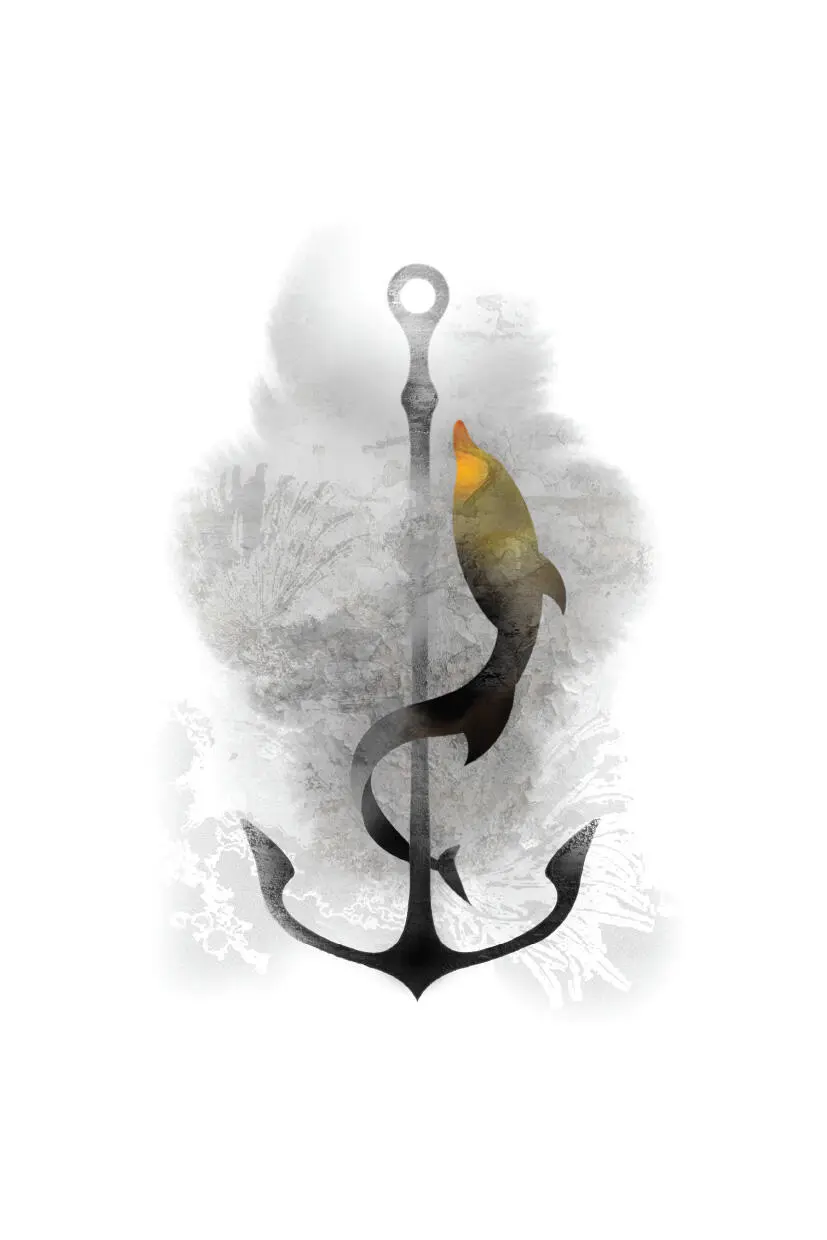
Who are we and how do we achieve this that we are?
Octávio Paz
Ana: – Hey, are you around?
Martha: – No, I’m travelling.
Ana: – I wanted to ask you about something, but it can wait.
Martha:– No way. Tell me now.
Ana: – I’m sending you a small text about the matter by e-mail.
(The text talked about the possibility of studying women in their fifties; the challenges of the new middle age, of greater life expectancy, and the life projects that women are undertaking in this extended period.)
Martha: – I’m in!

In the middle of the path of our life,
I find myself in a dark jungle,
because the straight path had disappeared.
Dante Alighieri
One must be 50 in order to talk about middle age and to feel it surrounding us. One must awaken one day without the certainties that once consoled us, and experience some degree of helplessness.
Reading and researching about the theme of middle age makes more sense when our joints start failing us, signaling that some form of action is urgent.
If being born, growing, “teen aging”, and aging exist, it seems timely for us to propose a “middle aging”.
We only name what we know. When we name something, we control the meaning and the function of the things; we seize for ourselves that which until then had been strange to us. Even though the perceptions in this stage can seem distorted and hyperbolic to the eyes of others, middle age only lets itself be known by successive approximations. It turns out to be unequal for each woman.
So upon turning 52, that was how I, Ana Cristina, decided to make use of my research training to better understand what was happening to me.
The idea of forming a partnership to share this moment of reading and studying the subject seemed to make perfect sense to me. Martha — a psychologist and colleague and friend from my generation, who had the same eagerness to learn and delve into different topics — accepted the challenge.
***
After some lunches with Ana we had our first conversation about what it would be like to study this topic and what to do with it.
We started with the Greek philosopher Zeno. She wasn’t here to joke around!
We discussed the paradox of the arrow: an archer aims at a target and launches the arrow from his bow. At each particular instant of time the arrow occupies a defined space. This means that, at each finite time, the arrow is at rest. Now, how do you understand that it is both at rest and moving? Does movement generate rest? Is rest a condition for movement? Does the arrow hit the target or never reach it?
Time was there, pulling us, pushing us, paralyzing us, and always challenging us to understand it.
The paradoxes and dualities of our fifties were springing up everywhere.
A restlessness in the air, a vague discomfort, a feeling of “we’re there” but, what now? Will the best or the worst part start now?
Each of us looked at our fifties suspiciously, proud, happy, irritated, hopeful, disillusioned. Like the sphinx, these years returned, defiantly, our gaze: decipher us or we will devour you.
***
Our generation of women — post Simone de Beauvoir, post equal working conditions, post stable union law, post hormonal replacement, post artificial insemination and post freezing of eggs, post acceptance of new sexualities, post increase in average life expectancy, post digital revolution; in short, post everything and many things — stepped into our fifties with both feet, and we didn’t have to knock to enter: the door was open.
Читать дальше
